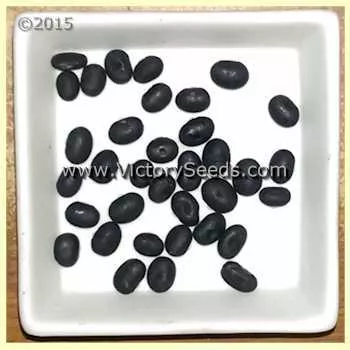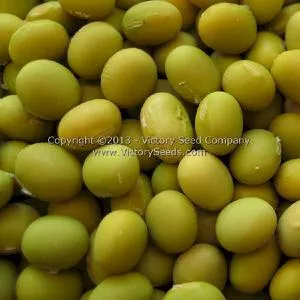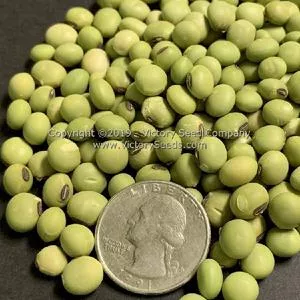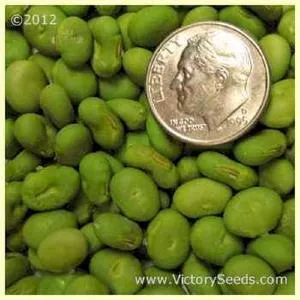Wisconsin Black Soybean
Glycine max
Price: $3.95
SKU: 3301471
Wisconsin Black
100 to 110 days, determinate - Also known as 'Buckshot'[2] and 'Extra Early Black Seeded'[1], 'Wisconsin Black' is one of the oldest named varieties of soybeans introduced in the United States. The plants grow twenty four to thirty four inches in height and produce beans that are small, slightly flattened, dimpled, and solid black in color.
The parent stock was USDA accession number PI 25468 (no longer maintained in the GRIN) which was obtained from the L. L. Olds Seed Company of Madison, Wisconsin. Originally called 'Extra Early Black Seeded'[1], it was collected in Ville-de-Paris, France by Vilmorin-Andrieux & Cie and introduced into the National Seed Lab in March of 1900 as PI 5039 (also no longer maintained in the GRIN). The Wisconsin Agricultural Experiment Station developed and released it as 'Wisconsin Black' in 1909.
Genetic Classification: Open Pollinated
Planting Instructions:
Soybeans are a tender plant and should be sown after all danger of frost has passed and the soil has warmed. Planting them at about the same time as corn is a good rule.
Sow seeds about one inch deep, three to four inches apart. Although you can plant in rows, they can be planted densely and allowed to form a canopy. This will help control weed growth. Soybeans are tolerant of drought and poor soil since they fix nitrogen. They will, however, benefit from fertile soil.
Soybean flowers are perfect (self-fertile) and cross pollination is almost non-existent, making saving seed easy. Allow pods to fully develop and dry on the plants.
Sow seeds about one inch deep, three to four inches apart. Although you can plant in rows, they can be planted densely and allowed to form a canopy. This will help control weed growth. Soybeans are tolerant of drought and poor soil since they fix nitrogen. They will, however, benefit from fertile soil.
Soybean flowers are perfect (self-fertile) and cross pollination is almost non-existent, making saving seed easy. Allow pods to fully develop and dry on the plants.
Informational Sources:
- “Soybean Variety Names,” USDA Agricultural Marketing Service, Washington, DC, Supplement 1 to Service and Regulatory Announcements No. 156 “Rules and Regulations Under the Federal Seed Act,” page 25, 1957.
- “Soy Bean Varieties,” Carleton R. Ball, USDA Bureau of Plant Industry, Bulletin No 98, pages 13-14, 1907.
Customer Reviews:
Do you have experience with this one? 📝 📣 Write a review!
No reviews have been posted yet.





